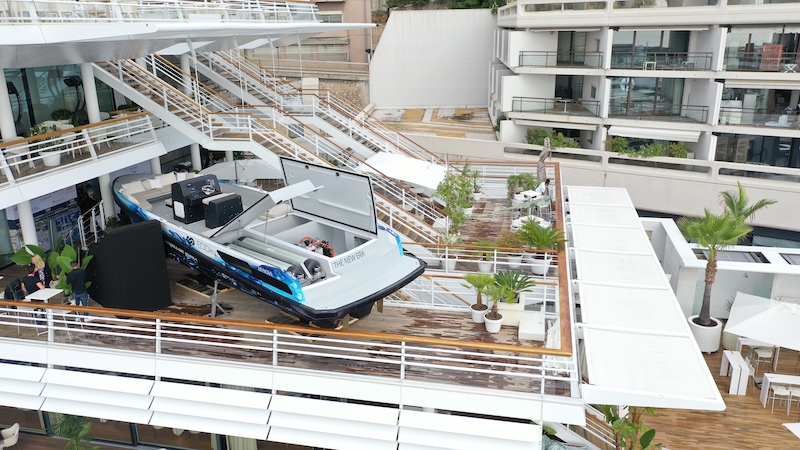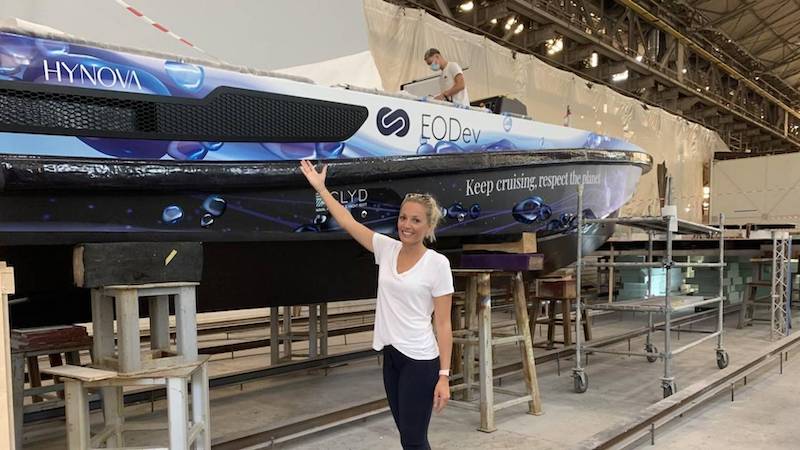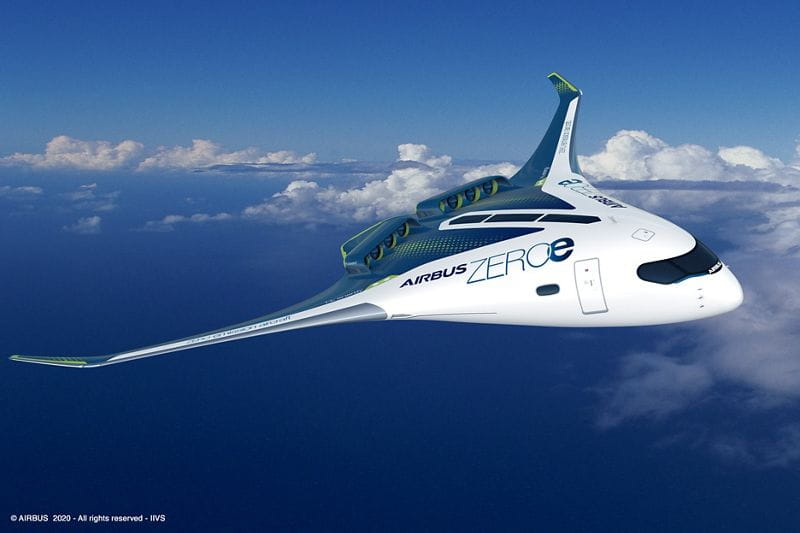Is hydrogen the future of the boat?
The world's first hydrogen-powered pleasure boat, Hynova Yacht has just left the La Ciotat shipyard for a prestigious exhibition on the Monaco Yacht Club terrace.

The hydrogen boat on display at the Yacht Club de Monaco
This is a great consecration for Chloé Zaied, project founder. Indeed, the Yacht Club is one of the major precursors of eco-navigation at sea, as we were able to see during the 2016 Solar Boat Challenge. This is an opportunity for seaZen, a specialist in the rental of solar-powered boats, to take stock of hydrogen transport and the prospects for boating.
What is the principle of the hydrogen boat?
Imagine a traditional motorboat, in which the combustion engine is replaced by an electric motor. To power this electric motor with as much energy as if you had an internal combustion engine with a fossil fuel tank, you would normally have to install batteries. With today's technology and given the amount of energy released by diesel, you need a lot of batteries if you want to maintain the same autonomy. Batteries take up space and are especially very expensive and heavy.
Hynova has imagined replacing the batteries with "electric fuel". In this case hydrogen. This is called a fuel cell. In the fuel cell, hydrogen produces electricity and gives off water.

Chloé Zaied presents the yacht Hynova in the shipyard of La Ciotat
How to obtain hydrogen supplies?
For many years, hydrogen looked like a technological mirage. The experts told us that there were insurmountable difficulties:
- Hydrogen is produced from oil, which is an ecological nonsense.
- Hydrogen must be stored in liquid form at minus ... 252 °C.
- The life of fuel cells is limited
All is not wrong, if we immediately seek to use very high power, in intensive use from today, it could be expensive to use. It so happens that boating is a leisure activity and this makes things much simpler.
But let's come back to the production of hydrogen. "Green" hydrogen can be produced from water by electrolysis, a process for producing hydrogen without polluting, provided that the electricity used is "green". Scotland is starting to produce hydrogen with offshore wind turbines, and a first plant will commissioning in 2024 in Aberdeen and will eventually supply fuel stations, trains such as the Alstom train and buses. Closer to home, the Energy Observer vessel which we have been following since 2017 demonstrates that this electrolysis can be done at sea with solar panels. The use of hydrogen is not limited to transport, it will be used to produce greener steels or cements. Thanks to all these increasingly concrete prospects, investments are pouring in. The massification of the means of production and the key to achieving a reasonable cost for hydrogen. Obstacles linked to the cost of manufacturing hydrogen will gradually be lifted.
Once hydrogen is produced, it must be stored. An outboard boat sails during the day and returns in the evening. It doesn't really need cabins for the passengers to stay in. All the space freed up can be used to store conventional high-pressure tanks.
As for fuel cells, there are solutions. The Energy Observer Developments incubator - them again! - has developed a fuel cell for marine applications.
What is the future of hydrogen transport?
The mistake is to imagine that uses are not going to change and that one technology is going to replace another as simply as that. In fact, solutions will adapt to uses that will themselves change. Let's take a step back on hydrogen.
Finding the right mix of fuel cell, battery, photovoltaic and wind power
It should not be forgotten that batteries continue to progress. In France, the CEA is pushing many innovations concerning power, recycling and durability. For example, the price of batteries for electric vehicles has already fallen by 90% since 2010.
The solar-powered boat is also very promising for pleasure boating, particularly for boat rides and boat hire without a licence. Since 2016 SeaZen has welcomed more than 4,000 visitors, travelled more than 4,000 nautical miles and has not consumed a single kilowatt on the electricity grid. The proof is in!
 Solar boats are sailing in Nice or Antibes
Solar boats are sailing in Nice or Antibes
Sailing boats are not to be outdone. They continue to progress and no doubt they will be able to recharge their batteries while sailing thanks to propellers that will turn underwater, Hydro-generators. Even the merchant navy is going to switch to sailing. Thus, from 2021, Neoline's cargo ships set sail for Bénéteau. Who would have believed it!
In short, all energy sources complement each other and the choice will be made according to use.
- The yachts continue to evolve among a public of faithful and passionate amateurs.
- Motorboats will easily switch from the combustion engine to the electric motor as they have already done by leaving the steam pistons for the combustion engine.
- The solar boat could also appeal to a wide public, as it combines the simplicity of the engine with the charm of sailing.
Hydrogen is also a solution for the air
Even the aeroplane is getting into it. In the air, it seems hard to believe that batteries have a future because of their weight. In search of solutions, the Airbus manufacturer thinks that hydrogen fuel could directly feed the engines or propeller turbopropellers. In this case we don't even have to install fuel cells, which is "simpler". In fact, the "size" difficulty consists in storing hydrogen in liquid form at -250 degrees.

Airbus hydrogen-powered flying wing under study for 2035
In conclusion, the multiplication of uses for industry and transport will make hydrogen unavoidable. So at sea, or in the air, let's embark for hydrogen!




